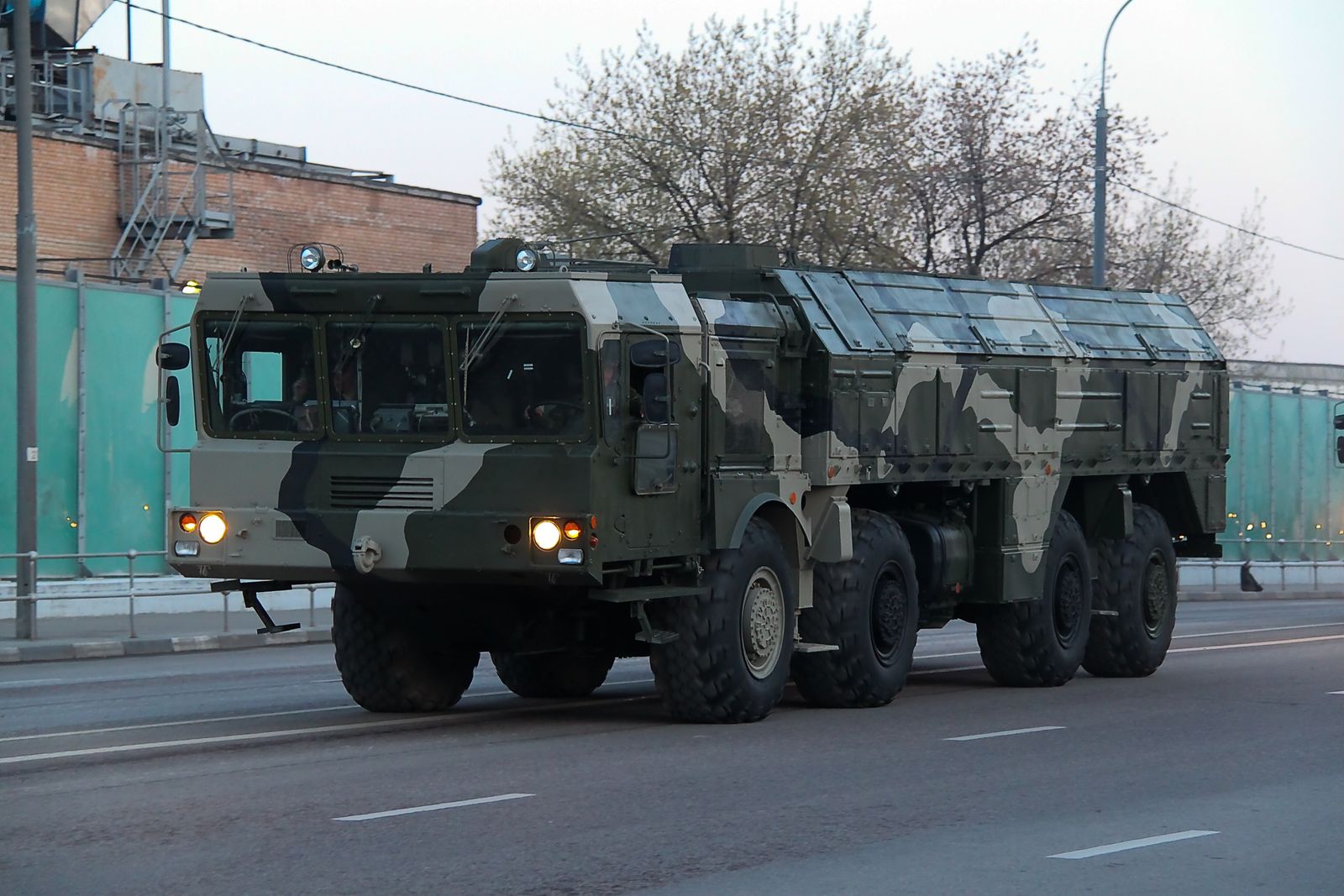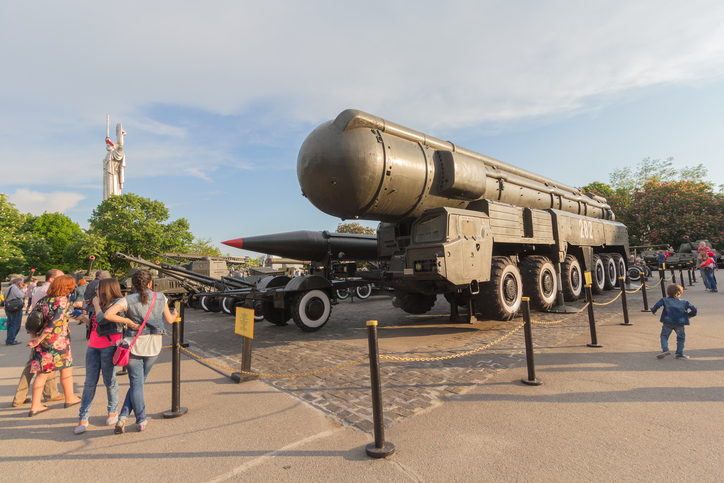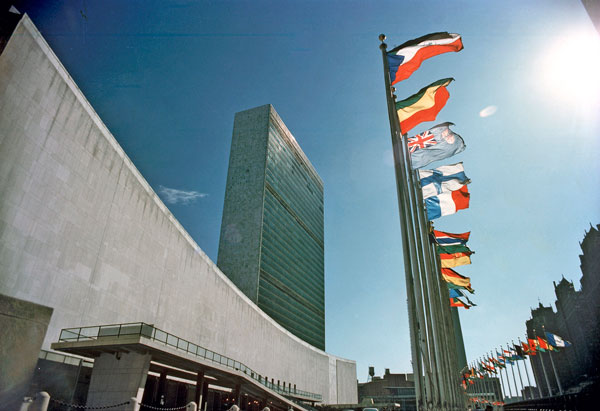The Trump administration announced its decision to withdraw from the Intermediate-Range Nuclear Forces Treaty (INF Treaty) February 2, citing continued Russian non-compliance with the treaty’s restrictions on flight-testing and deployment of intermediate-range missiles. The non-compliant missile in question is the ground-launched 9M729 cruise missile, developed by the Novator Design Bureau. NATO, which designates the missile the SSC-8 Screwdriver, issued a statement on December 4, 2018 endorsing the US finding that Russia is in breach of the treaty.
Despite the focus on the Russia’s 9M729/SSC-8 missile, China looms large in Washington’s withdrawal decision. As reported in this space previously, sooner or later the international community would have had to reckon with the non-application of the INF Treaty to China — not do mention other states in Asia. Former US Pacific Command Chief, Admiral Harry Harris, estimated that over 90 percent of China’s ground-launched missiles would fall under INF restrictions if Beijing were subject to the treaty. Chinese intermediate-range missiles like the DF-21 and DF-26, dubbed “Carrier Killer” and “Guam Killer” respectively, are key Chinese anti-access/area-denial capabilities and thus direct challenges to the American military presence in the Western Pacific region. As if to underscore the missile capability gap, days before the US withdrawal decision Chinese state media released for the first time video footage of a People’s Liberation Army Rocket Force exercise that included a launch of the DF-26.
If missile proliferation in Asia has put strain on the treaty, so too has the deterioration of security relations in Europe. Moscow asserts that the US Mk-41 “Aegis Ashore” anti-ballistic missile system, currently deployed in Romania and planned for Poland, could be repurposed to fire ground-launched variants of the Tomahawk sea-launched cruise missile. (It was a ground-launched variant of the Tomahawk, the BGM-109G Gryphon, that the US deployed to counter Soviet SS-20 Saber missiles in the 1980s). In a tit-for-tat response to the 9M729/SSC-8, the 2018 US Nuclear Posture Review called for research and development on a new land-based intermediate-range missile. What’s more, a Trump administration memo obtained by the Washington Post called not only for the development of new missiles but also their deployment “at the earliest possible date.” “We will return to the situation with the Pershing missiles in Europe,” warned Russian President Vladimir Putin after meeting in October with Trump’s National Security Advisor, John Bolton, whose signature is on the memo. New land-based missiles, if deployed in NATO countries that were formerly members of the Warsaw Pact, would be much closer to Russian borders than Pershing IIs and Gryphons ever were in the 1980s. All these developments take place against a backdrop of ever-deteriorating relations between Russia and the West.
Absent the INF Treaty Moscow will be free to pursue new missile programs unfettered by arms control. Russian defence planners are likely eager to address the imbalance Russia faces in theatre-range rocket power vis-à-vis states on or near its periphery that possess or are developing medium-range missiles. But with US treaty abrogation comes the menacing prospect of new US intermediate-range missiles aimed at strategic targets in Russia. Confronting the spectre of anABM interceptor repurposed for offensive weaponry and new generation American land-based missiles, it comes as no surprisethat Kremlin spokesman, Dmitry Peskov, characterized the US threat to pull out of the INF Treaty as “a question of strategic security.”
Washington’s INF decision is no less strategic for European NATO countries. As detailed here, the alliance’s European membership finds itself in a predicament. Notwithstanding Russian noncompliance, it is Washington — and not Moscow — that withdrew from the treaty. Politically, an American withdrawal will test the cohesion and solidarity of an already fissiparous alliance when it comes time to craft a NATO strategy for a post-INF world. Even before the US decision, Russia’s Foreign Ministry was claiming that the US was “seeking a pretext” to abrogate the treaty. And after failed negotiations to salvage the treaty in Geneva last month, Deputy Foreign Minister, Sergey Ryabkov, asserted that the US is “entirely” to blame for the fruitlessness of the talks.
Now that the Trump administration withdrew, Russia will double-down on a narrative of Washington perfidy. The focus of Western public and parliamentary opprobrium will likely focus squarely on Trump. All the while, Russia will be in a position to continue fielding rocket battalions armed with the 9M729/SSC-8. Such a scenario would resemble that of the 1980s Euromissile Crisis. Western peace protests concentrated their opposition on the NATO decision to counter Moscow’s deployment of new missiles, not the Soviet missiles themselves. The Soviet Politburo was all too happy with this state of affairs. “Pacifism is in the West and the Euromissiles are in the East,” French President François Mitterrand famously quipped at the time.
There has been a conspicuous absence of European voices warning about the risks associated with the reintroduction of intermediate-range missiles into the European security equation. Much of the continent is inward-focused, wracked by the populist challenge, with no Helmut Schmidt-type figure to sound the alarm on what new missiles would mean for military security on the continent. To date, it has fallen to NATO Secretary-General, Jens Stoltenberg, to declare that the 9M729/SSC-8 is a risk to regional security, as he did in an op-ed column that appeared recently in European newspapers. Now that the Dutch government claims it has independently verified that Russia developed the 9M729/SSC-8 in breach of its INF obligations, the INF issue may gain traction in European capitals. In recent months German Foreign Minister Heiko Maas has begun to draw more attention to the importance of the treaty to security in Europe — and the world.
For the US, a post-INF Treaty world will demand foreign policy discipline of the sort that is in short-supply these days. If the Euromissile Crisis is any indication, missile hosting decisions will entail skillful and painstaking diplomacy, often in the face of retaliation threats — the Kremlin has already warned it will not countenance new US missiles in Europe – and public opposition. Guam aside, missile installations would require the consent of host countries and all the attendant risks associated with such agreements. For deployments to be politically palatable and militarily survivable, more than one host country may be called upon to accept missile installations, adding to the complexity of post-INF diplomacy.
The question now is whether the US withdrawal marks a curtain call for intermediate-range arms control measures or whether the shock of its abrogation will precipitate a new round of arms limitations talks. The principal powers — Washington, Moscow and Beijing — do not appear willing to accept a diminishment of their relative military power vis-a-vis the others. That could mean for the foreseeable future the bleak scenario of a missile race absent a parallel arms control track.
Featured Image:Iskander-M launcher for 9M729 cruise missile. via Wikipedia.
Disclaimer: Any views or opinions expressed in articles are solely those of the authors and do not necessarily represent the views of the NATO Association of Canada.




